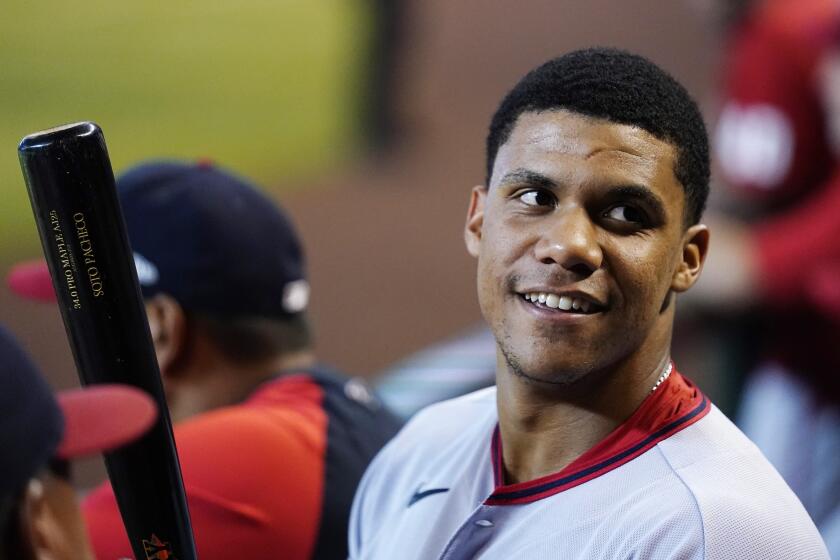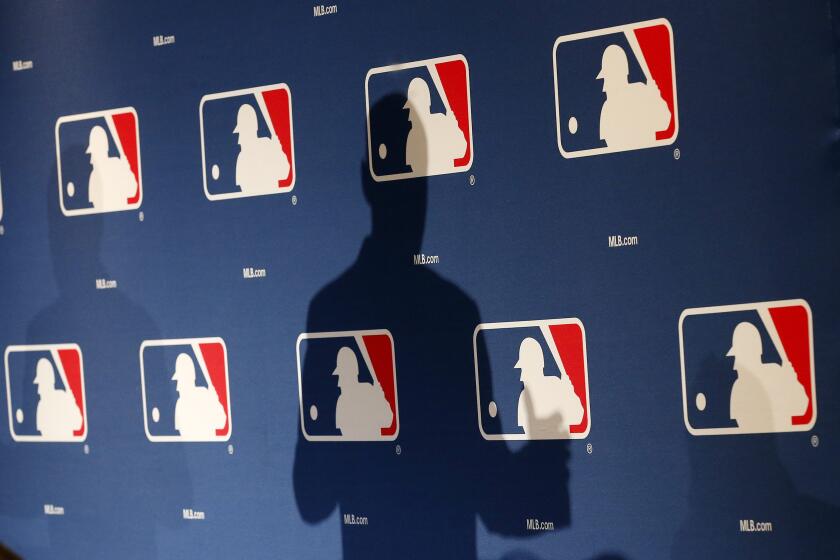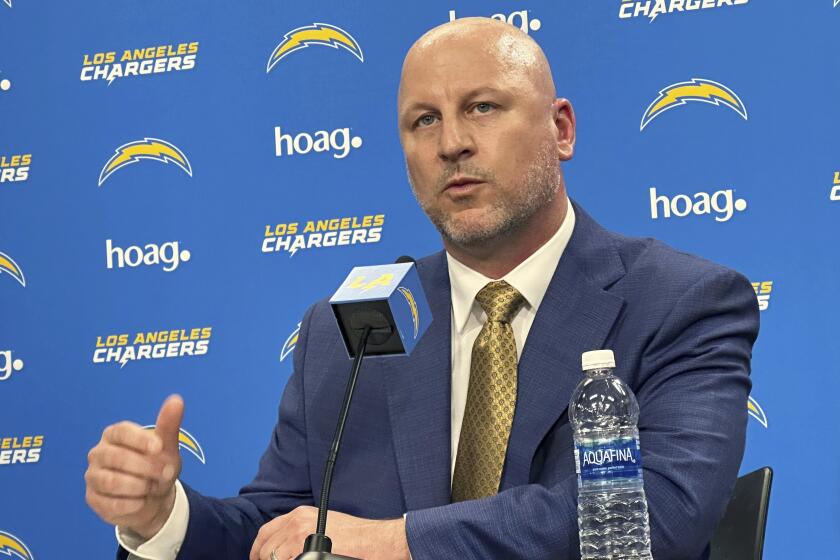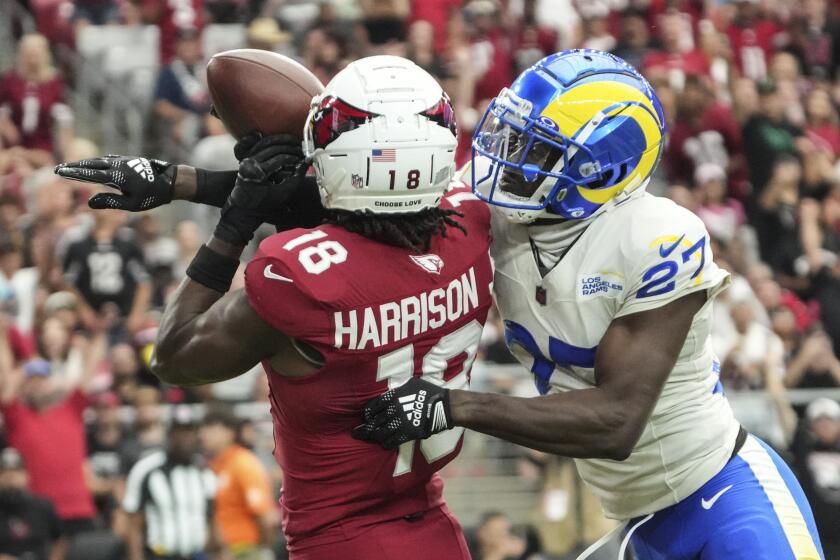Baseball players union rejects MLB’s proposal for an international draft
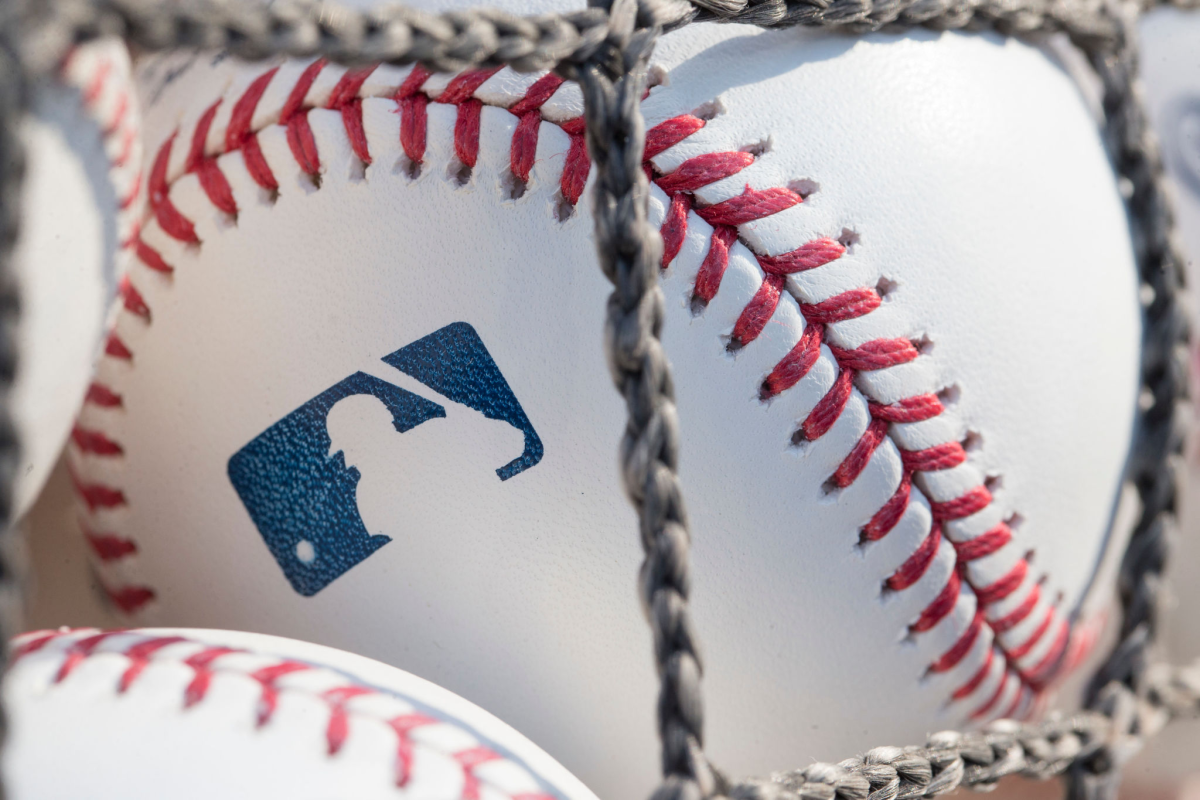
Major League Baseball will not have an international draft after all.
The MLB Players’ Assn. rejected the league’s final proposal for an international draft beginning in 2024 on Monday, again pushing a hot-button issue to the next round of collective bargaining agreement negotiations.
The two sides agreed to table the matter in March when they agreed on a five-year collective bargaining agreement to end an owner-imposed lockout, setting a deadline for Monday. To entice the union, MLB offered to remove direct draft pick compensation for qualified free agents — a mechanism that has negatively affected players over the last decade — in exchange for the international draft.
Washington Nationals star Juan Soto is the biggest prize ahead of the MLB trade deadline, but are teams willing to retool their farm systems to land him?
MLB proposed a 20-round international draft last July that included $190 million in total spending on players with hard slots for each pick. That was an increase from the $166 million clubs spent on international amateur free agents during the 2021 signing period. The league then pushed for the international draft in March, which nearly derailed talks in the final days before the two parties agreed on a CBA.
The union waited until early this month to present a 20-round counterproposal. In it, $260 million would be allocated to players in the 2024 draft and hard slots weren’t included. Instead, teams would have to guarantee players minimum slot values but would have the flexibility to exceed them within bonus pools. It was the first time the union offered instituting an international draft.
The league responded with its final offer Sunday, increasing the proposed guaranteed money for players in 2024 to $191 million with hard slots. MLB said the financial commitment could reach $200 million, or $33 million more than the current system. It wasn’t good enough for the union.
“The league’s responses fell well short of anything players could consider a fair deal,” the MLBPA said in a statement Monday.
The international draft would have operated separately from the domestic draft, which was introduced in 1965 for United States and Canada residents. It began including residents of U.S. territories, including Puerto Rico, in 1990. Players in other countries are eligible to sign with teams as international amateurs at 16 years old, with some exceptions.
Owners have sought an international draft for years. They’ve argued a draft is the best way to mitigate the rampant corruption plaguing the current Latin American amateur baseball scene — most notably in the Dominican Republic — while more effectively restricting performance-enhancing drug use and cutting superfluous costs.
MLB says an international draft would curb corruption and PED use in Latin America. The union has countered that it won’t solve problems.
“We are disappointed the MLBPA chose the status quo over transitioning to an international draft that would have guaranteed future international players larger signing bonuses and better educational opportunities, while enhancing transparency to best address the root causes of corruption in the current system,” MLB said in a statement.
The union has contested that MLB’s inability to police its own teams has created the problems. Atop the list are the early nonbinding agreements teams make with players as young as 12. Early deals were always an issue, but became the norm after MLB and the MLBPA agreed to place hard caps on international signing pools. The restrictions have created a rush for trainers, known as buscones, to grab a piece of the pie years before the players are eligible to sign.
The early deals are why MLB considered a draft without hard slots a nonstarter. The league refused to budge on the matter, the money was never close, and the international draft remains a hurdle for the future.
More to Read
Go beyond the scoreboard
Get the latest on L.A.'s teams in the daily Sports Report newsletter.
You may occasionally receive promotional content from the Los Angeles Times.

